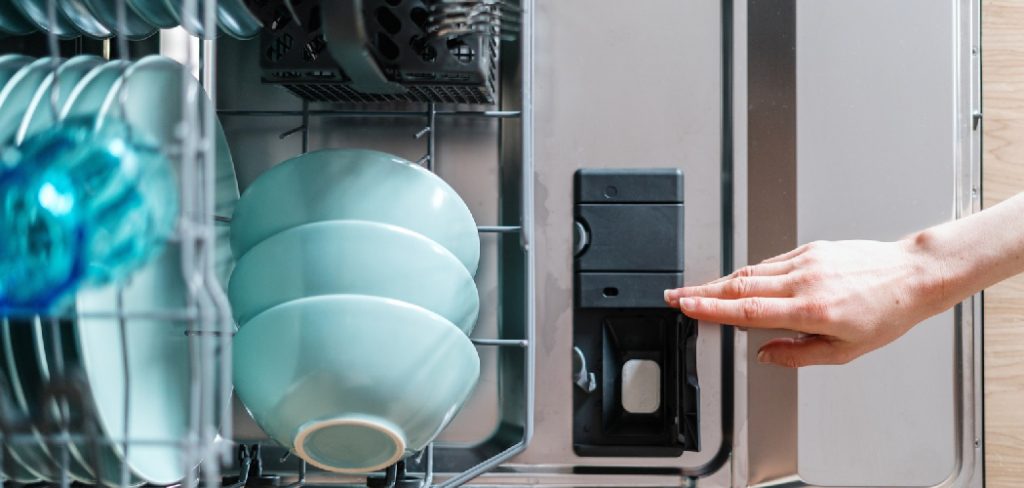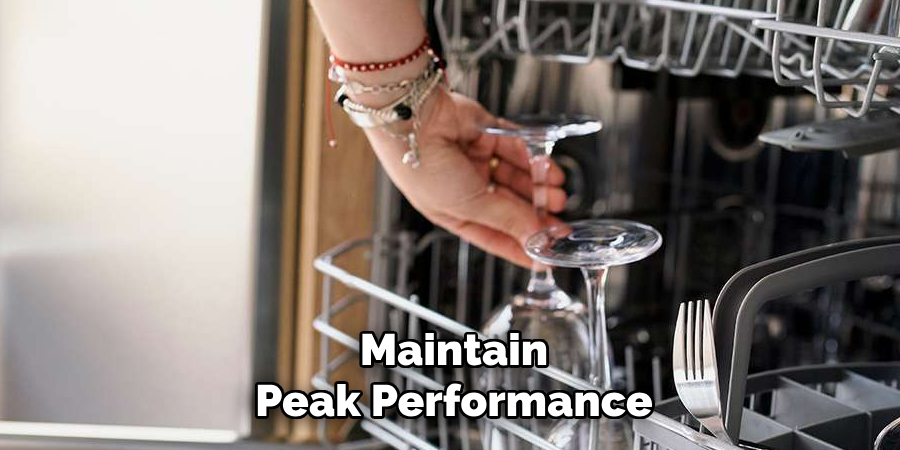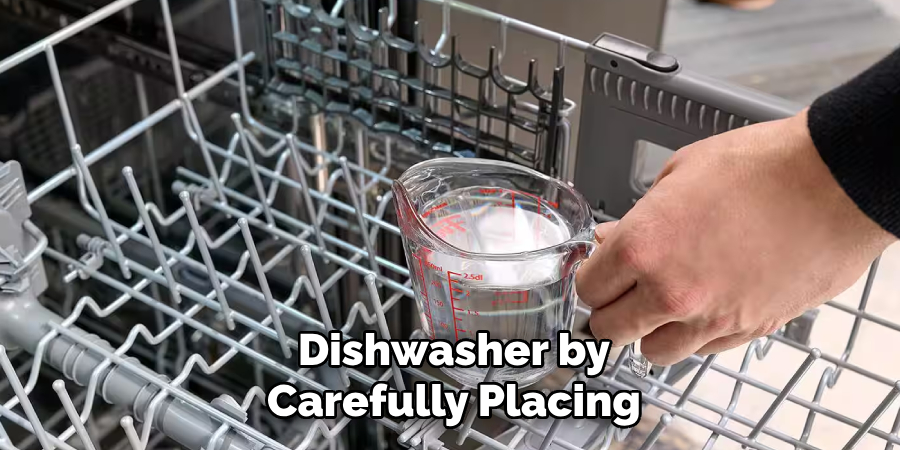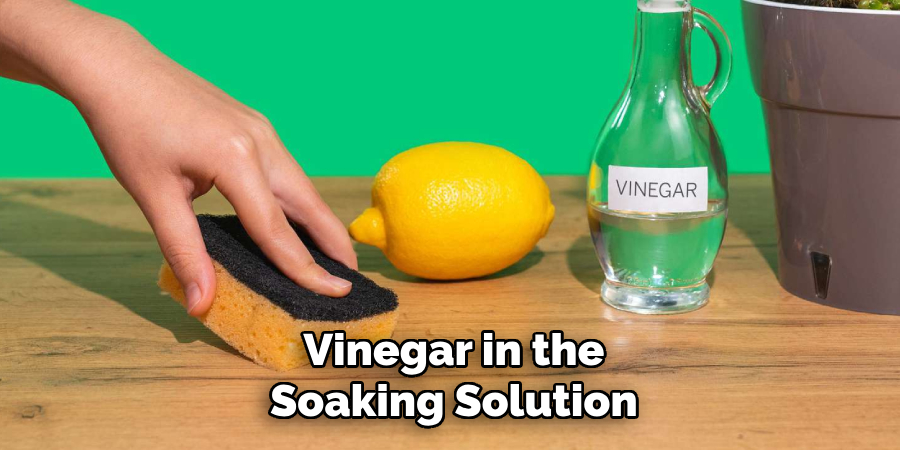Keeping your dishwasher in top condition is essential for ensuring clean and spotless dishes. One crucial part that often gets overlooked during maintenance is the dishwasher blades.

Over time, these blades can become clogged with food particles, grease, and mineral buildup, reducing their efficiency. Regularly cleaning the dishwasher blades not only extends the life of your appliance but also ensures it runs effectively.
This guide on how to clean dishwasher blades will walk you through the steps to properly clean your dishwasher blades and maintain peak performance.
Why Clean Dishwasher Blades?
Before we dive into the cleaning process, let’s first understand why it is essential to clean dishwasher blades regularly. Here are some reasons why keeping your dishwasher blades clean is crucial:
Efficient Cleaning:
Clogged or dirty dishwasher blades cannot effectively spray water onto dishes, resulting in poor cleaning performance. Regularly cleaning the blades ensures they are free from any buildup, allowing them to function correctly and provide optimal cleaning.
Preventing Odors:
The accumulation of food particles on dishwasher blades can lead to a foul smell in your appliance. This odor can transfer onto your dishes and even your kitchen if not addressed promptly.
Avoiding Damage:
If left uncleaned for an extended period, debris and mineral buildup on dishwasher blades can cause damage to the blades and other parts of the appliance. This can result in expensive repairs or even replacement.
Needed Materials
Before starting the cleaning process, make sure you have the following materials on hand:
Sponge or Soft Cloth:
This is for wiping down the dishwasher blades and removing any buildup.
Vinegar:
A powerful natural cleaner that effectively removes grease and mineral buildup.
Baking Soda:
Another natural cleaning agent that helps remove tough stains and odors.
Toothpick or Small Brush:
It is used to reach small crevices and remove stubborn debris from the blades.

7 Step-by-step Guides on How to Clean Dishwasher Blades
Step 1: Turn Off and Unplug the Dishwasher
Before starting the cleaning process, ensure your safety by turning off the dishwasher and unplugging it from the power source. This step is crucial to prevent any accidental activation of the appliance while you are working on it.
If your dishwasher is hardwired into your electrical system, switch off the circuit breaker connected to the appliance. Always prioritize safety when performing maintenance on any household appliance.
Step 2: Remove the Dishwasher Racks
To access the dishwasher blades, you’ll need to remove the dishwasher racks. Start by pulling out the bottom rack completely and setting it aside in a safe location. For the top rack, check your dishwasher’s manual to determine if it is removable. Most dishwashers have tabs or clips that need to be pressed or lifted to allow the top rack to slide out completely.
Removing the racks provides a clear view and easy access to the blades, making the cleaning process more efficient. Make sure to inspect the racks for any buildup or debris and clean them if necessary before placing them back later.
Step 3: Wipe Down the Blades
Using a damp sponge or soft cloth, gently wipe down the blades to remove any food particles, grease, and other debris. Pay close attention to the edges and crevices of the blades where buildup is most likely to occur.
If there is stubborn residue that won’t come off with just water, you can use a small amount of dish soap or vinegar for added cleaning power.
Step 4: Soak in Vinegar Solution
To eliminate mineral buildup on dishwasher blades, fill a bowl or sink with equal parts white vinegar and water. Submerge the blades in this solution and let them soak for about 15 minutes. The vinegar will help dissolve and loosen any mineral buildup, making it easier to remove in the next step.
It’s important to use white vinegar as it is more acidic compared to other types of vinegar, making it a more effective cleaner.
Step 5: Scrub with Baking Soda
After soaking the blades in the vinegar solution, remove them and sprinkle baking soda over each blade. Using an old toothbrush or small brush, gently scrub the blades to remove any remaining buildup. Baking soda is known for its abrasive properties, making it an excellent natural cleaner for tough stains and odors.
The combination of vinegar and baking soda creates a powerful cleaning solution that is gentle on your dishwasher blades.
Step 6: Clean the Filter
While the blades are soaking in the vinegar solution, take this opportunity to clean the dishwasher filter. The filter is responsible for catching any food particles and debris before they reach the drain pump. Over time, it can become clogged, affecting your dishwasher’s performance.
Remove the filter according to your dishwasher’s manual and rinse it under running water to remove any buildup or debris. You can also use an old toothbrush to gently scrub away stubborn residue.
Step 7: Rinse and Reassemble
After thoroughly cleaning the dishwasher blades, rinse them under warm running water to remove any remaining vinegar or baking soda residue. Ensure that the blades are completely clean and free from any debris or cleaning agents. Once rinsed, gently dry them with a clean towel or allow them to air dry.

Next, reassemble your dishwasher by carefully placing the cleaned blades back in their original positions. Ensure that they are securely attached and do not wobble, as improper assembly can impact their functionality. Reattach the dishwasher racks, ensuring they slide smoothly into place.
Once everything is reassembled, plug your dishwasher back in or turn on the circuit breaker. Your dishwasher is now ready for use, running efficiently with clean, functioning blades.
Common Misconceptions About Dishwasher Blade Cleaning
- Dishwasher blades do not need to be cleaned regularly.
- Cleaning the blades is not necessary since detergent and hot water will clean them during a wash cycle.
- Vinegar is harmful to dishwasher blades and can cause damage.
Additional Tips for Maintaining Dishwasher Blades
- Inspect the blades regularly for any signs of damage or buildup, and clean as needed.
- Run your dishwasher with a cup of white vinegar on the top rack to help remove any lingering odors inside the appliance.
- Use proper measuring techniques when loading your dishwasher to prevent food particles from getting stuck on the blades.
- Avoid using harsh chemicals or abrasives when cleaning the blades as they can damage the surface.
- If you notice any issues with your dishwasher’s performance, such as poor cleaning results or strange noises coming from the blades, it may be time to call a professional for maintenance or repairs.
By following these step-by-step guides on how to clean dishwasher blades and implementing these additional tips, you can ensure that your dishwasher blades remain clean and in good condition, promoting efficient cleaning and prolonging the lifespan of your appliance. Remember to prioritize safety at all times and regularly maintain your dishwasher for optimal performance. Happy cleaning!

Frequently Asked Questions
Q: How Often Should I Clean My Dishwasher Blades?
A: It is recommended to clean your dishwasher blades every 3-6 months or whenever you notice a buildup of debris on them. The frequency may also depend on how often you use your dishwasher.
Q: Can I Use Commercial Dishwasher Cleaners Instead of Natural Ingredients?
A: While commercial cleaners may effectively clean your dishwasher blades, they often contain harsh chemicals that can be harmful to your health and the environment. Using natural ingredients like vinegar and baking soda is a safer and more eco-friendly option.
Q: Are There Any Other Maintenance Tips for My Dishwasher Blades?
A: To prevent buildup on your dishwasher blades, it’s essential to scrape off excess food from dishes before loading them into the appliance. You can also run an empty cycle with vinegar once a month to keep your dishwasher clean and odor-free.
Q: Can I Use Lemon Juice Instead of Vinegar for Cleaning Dishwasher Blades?
A: Yes, lemon juice can be used as a substitute for vinegar in the soaking solution. It has similar acidic properties that help dissolve mineral buildup on blades. However, it may not be as effective as white vinegar. Overall, regularly cleaning your dishwasher blades is an essential part of maintaining a clean and efficient kitchen.
With these tips, you can easily keep your blades in top condition and ensure that your dishwasher runs smoothly for years to come. So say goodbye to stubborn residue and hello to sparkling clean dishes! Happy cleaning!

Conclusion
Cleaning your dishwasher blades is an essential maintenance task that should be done regularly to ensure optimal performance and prolong the life of your appliance.
With just a few simple steps on how to clean dishwasher blades, you can prevent odors, avoid costly repairs, and keep your dishwasher functioning at its best. Remember to prioritize safety by turning off the power source before starting any cleaning process. Keep these steps in mind and make them part of your regular kitchen cleaning routine for a sparkling clean dishwasher every time. Happy cleaning!
Professional Focus
Angela Ervin, a former interior designer turned blogger, specializes in kitchen design and renovations. Through her website, she blends her passion for cooking with design expertise, sharing practical and creative ideas. Known for balancing functionality and beauty, Angela’s insightful content has made her a trusted voice in home design and lifestyle.
About the Author
Angela Ervin, an experienced interior designer and blogger, combines her passion for kitchen renovations with storytelling. Living in Petersburg with her family, she enjoys cooking and testing her projects firsthand. Known for her humor and relatable style, Angela shares creative, functional design insights through her content, making her a trusted voice in home design.
Education History
University: Virginia Commonwealth University
Degree: Bachelor of Fine Arts (BFA) in Interior Design
- Angela’s education at VCU focused on mastering core interior design principles, including spatial planning, color theory, materials selection, and sustainable design practices.
- She gained hands-on experience through studio projects and collaborative design exercises, which honed her ability to create functional and aesthetically pleasing environments.
- Her coursework also emphasized problem-solving and practical applications of design, preparing her for real-world projects like her self-directed kitchen renovations.
- The program’s strong foundation in both technical skills and creative expression shaped Angela’s ability to seamlessly integrate form and function in her work.
